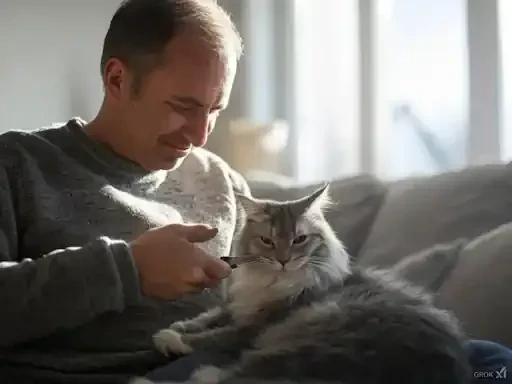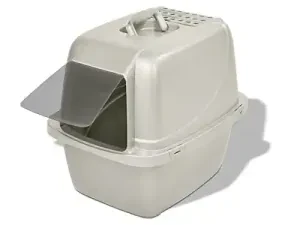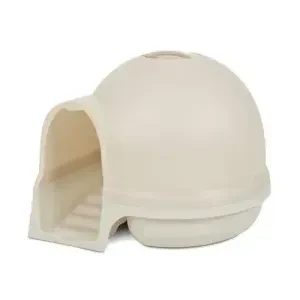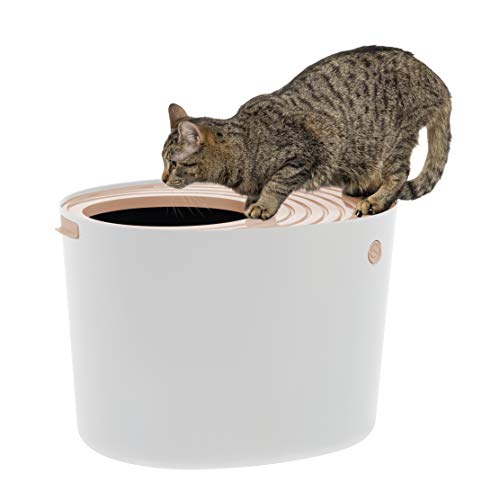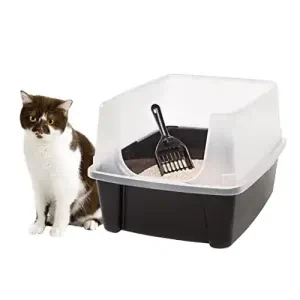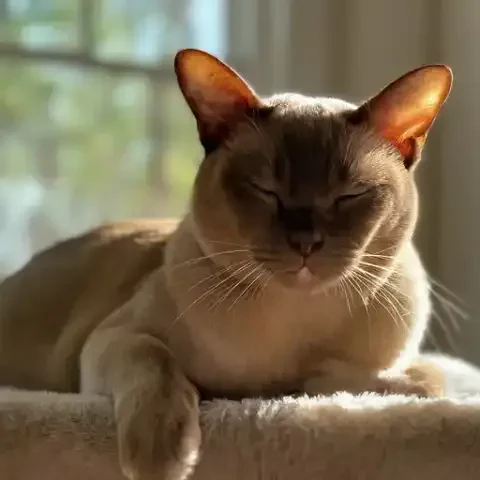We adore our feline companions, cherish their purrs, and marvel at their graceful leaps. Yet, those claws – those formidable, retractable daggers – can sometimes be a source of apprehension for even the most devoted cat lovers. We provide scratching posts, towers, and mats, hoping these dedicated surfaces will be enough to manage their natural scratching instincts and maintain claw health. But have you ever paused to consider if that scratching post is truly sufficient? Is it truly meeting all of your cat's nail care needs? Cat nail trimming, while often overlooked amidst the daily routines of feeding and playtime, is actually a cornerstone of responsible cat ownership. It’s a practice that extends far beyond simply protecting your furniture; it's a vital element in ensuring your cat's overall health, safety, and ultimately, their happiness. For many, the idea of trimming their cat's nails might conjure up images of wrestling matches and feline fury. Perhaps you believe cats "need" their long claws to climb, hunt, or simply be cats. It's easy to fall into the misconception that scratching posts are the ultimate solution, fulfilling all claw-related needs. However, while scratching posts are indeed essential for providing an outlet for natural scratching behavior and helping to shed the outer layers of their claws, they are not a complete substitute for regular nail trims. This article aims to dispel these misconceptions and illuminate the often-underestimated importance of proper cat nail trimming. We'll delve into the "why" and the "how," providing a comprehensive guide to help you understand the profound impact nail trimming has on your feline friend's well-being. By understanding the potential problems of untrimmed claws and the significant benefits of regular trimming, you'll gain a new appreciation for this essential aspect of cat care. You’ll discover that nail trimming isn’t just about protecting your home; it’s about fostering a healthier, happier cat, ensuring their safety, and ultimately, strengthening the beautiful bond you share with your beloved feline companion.
To fully grasp the significance of nail trimming, it’s essential to understand the potential consequences of neglecting this crucial aspect of feline care. The seemingly innocuous untrimmed claw can, over time, lead to a cascade of problems, impacting your cat's health, behavior, and even your home. Left untended, cat nails can grow to alarming lengths. They thicken, curve dramatically, and begin to curl under, losing their sharp point but gaining in overall bulk and becoming increasingly problematic. Overgrown nails are not merely an aesthetic issue; they can be a source of significant pain and discomfort for your cat. As the nails grow excessively long, they can impede your cat’s ability to walk comfortably. Imagine trying to walk with shoes that are several sizes too big and constantly catching on the ground. With each step, overgrown nails can press painfully into the paw pad, especially when the cat puts weight on their paws. This discomfort can lead to changes in gait, reluctance to walk or jump, and a general decrease in activity levels. Even more concerning is the serious condition of ingrown nails. This occurs when the curled-under nail grows so long that it actually pierces the paw pad, embedding itself in the soft tissue. Ingrown nails are not just painful; they are a significant health risk. The puncture wound creates an entry point for bacteria, leading to infection. Untreated ingrown nails can result in painful abscesses, requiring veterinary intervention, often involving antibiotics and even surgical removal of the ingrown portion of the nail. Beyond ingrown nails, overgrown claws, even without penetrating the paw pad, can cause other types of infections. The nail bed itself can become infected if the nail is damaged or traumatized, and the constant pressure and altered paw mechanics from overgrown nails can make the paws more susceptible to minor injuries that can become infected. Furthermore, chronic discomfort and altered gait due to overgrown nails can have long-term repercussions on your cat's musculoskeletal health. Cats may compensate for paw pain by shifting their weight unevenly, putting undue stress on other joints. Over time, this altered gait and joint stress can contribute to the development or exacerbation of arthritis, particularly in older cats who are already predisposed to joint issues. The discomfort and pain associated with overgrown nails can also manifest in behavioral changes. A cat with painful paws may become more irritable, withdrawn, or reluctant to be handled. They may become less tolerant of petting, particularly around their paws, and may even exhibit aggression if their paws are touched due to the pain. Paradoxically, while scratching is a natural and necessary behavior for cats, overgrown nails can actually lead to an increase in undesired scratching. Long, unwieldy nails can make scratching on appropriate surfaces, like scratching posts, less effective and satisfying. In their search for relief and a way to groom their nails, cats with overgrown claws may turn to less desirable surfaces, such as furniture, carpets, and curtains, which offer more resistance and perhaps a more satisfying scratching experience for their problematic claws. Additionally, long, sharp claws, even if not overgrown to the point of causing health issues, dramatically increase the likelihood of accidental scratches to owners. During playful swatting, kneading, or even simply being held, longer claws are more prone to snagging skin and causing painful scratches, even if unintentional. Cats experiencing paw pain from overgrown nails may also become more sensitive to paw handling in general. This sensitivity can make them less willing to be touched or petted, diminishing the physical affection and bonding that is so important in the cat-owner relationship.
The good news is that the potential problems associated with untrimmed claws are almost entirely preventable. Regular nail trimming, a simple yet profoundly impactful aspect of cat care, unlocks a wealth of benefits for your feline companion, enriching their health, behavior, and overall well-being, while also making your home a safer and more harmonious environment. The most significant health benefit of regular nail trimming is the near elimination of the risk of ingrown nails. By keeping nails trimmed to a healthy length, you prevent them from growing excessively long and curling under to pierce the paw pad. This single action drastically reduces the risk of pain, infection, and the need for veterinary intervention related to ingrown claws. Beyond preventing ingrown nails, regular trimming significantly reduces paw pain and discomfort in general. Trimmed nails allow cats to walk, run, and jump more comfortably, without the constant pressure and unnatural angles imposed by overgrown claws. This improved comfort can lead to increased activity levels, a happier demeanor, and a greater overall quality of life, especially for older cats or those with arthritis. Maintaining trimmed nails is a cornerstone of good paw health. By preventing injuries, infections, and the complications associated with overgrown claws, you are proactively promoting the overall health and integrity of your cat’s paws, ensuring they remain healthy and functional throughout their lives. Nail trimming is particularly beneficial for older cats and those suffering from arthritis or other mobility issues. For these cats, overgrown nails can exacerbate existing mobility challenges, making it even more difficult and painful to move around. Regular trimming helps maintain their mobility, reduces pain, and makes it easier for them to navigate their environment, enhancing their comfort and independence in their senior years. The positive behavioral impacts of nail trimming are equally significant. With trimmed nails, scratching posts become more effective and satisfying scratching surfaces. Cats with comfortably trimmed nails are more likely to utilize scratching posts appropriately, redirecting their natural scratching behavior away from your precious furniture and other household items. Regular nail trims also lead to gentler play and handling. Trimmed nails dramatically reduce the frequency and severity of accidental scratches during play, petting, and simply interacting with your cat. This makes cuddling, playtime, and general handling a far more enjoyable and worry-free experience for both you and your feline friend. Cats, just like humans, feel better and more confident when they are physically comfortable and pain-free. By alleviating paw discomfort through regular nail trims, you can contribute to your cat’s overall sense of well-being and confidence, allowing them to move and interact with their environment with greater ease and joy. The benefits of nail trimming extend beyond your cat's well-being and directly impact your home environment. Perhaps the most immediately noticeable benefit for owners is the protection of furniture and your home from scratching damage. Trimmed nails are far less destructive than long, sharp claws. Regular nail trims significantly reduce the damage to furniture, upholstery, carpets, curtains, and other household items caused by scratching, saving you money on repairs and replacements, and preserving the aesthetic appeal of your home. With trimmed nails, you can enjoy worry-free interactions with your cat, knowing that accidental scratches are minimized. This allows for more relaxed cuddling, playtime, and handling, strengthening the bond you share without the constant worry of painful scratches. Even routine veterinary examinations become easier with regularly trimmed nails. Veterinarians need to examine your cat's paws as part of a comprehensive checkup. Trimmed nails make paw exams easier and less stressful for your cat, as there is less risk of painful pressure or snagging during the examination process. Finally, the act of caring for your cat, including gentle practices like nail trimming, strengthens the bond between you and your feline companion. Regular nail trimming, when approached with patience and positive reinforcement, becomes an act of care and attention that your cat can learn to tolerate and even associate with positive experiences, fostering trust and deepening the connection between you.
Before embarking on the nail trimming journey, gathering the right tools will set you up for success and make the process smoother and more comfortable for both you and your cat. The most essential tool in your nail trimming arsenal is a good pair of cat nail clippers. There are several types available, each with its own pros and cons. Guillotine-style clippers operate by inserting the nail into a ring and squeezing to bring a blade down to clip the nail. They are often popular due to their straightforward design and ease of use. However, some owners find them less precise and may feel they crush the nail slightly rather than making a clean cut. Scissor-style clippers resemble small scissors with curved blades designed to trim nails. Many owners find these clippers offer greater control and precision, allowing for very small, incremental trims. They are often favored for their clean cutting action and ability to trim just the very tip of the nail. Pliers-type clippers are robust and heavy-duty, offering a strong cutting action, but may be overkill for most domestic cat nails. These are often preferred for larger animals or very thick nails but are generally not necessary for routine cat nail trims. When choosing nail clippers, prioritize those specifically designed for cats. Human nail clippers are not appropriate and can be too large and unwieldy. Select clippers that are sharp and appropriately sized for your cat’s nails. Sharpness is paramount; dull clippers can crush or splinter the nail, causing pain and discomfort. Another indispensable item is styptic powder. This yellowish powder is a crucial safety net in case you accidentally cut the quick, the pink part of the nail containing blood vessels and nerves. Cutting the quick will cause bleeding, and styptic powder is designed to quickly stop minor bleeding. If you don’t have styptic powder on hand, cornstarch can serve as a readily available alternative in an emergency, though it may be less effective. Keep styptic powder or cornstarch easily accessible whenever you trim your cat's nails, just in case. Treats are your secret weapon for positive reinforcement. High-value treats, the kind your cat absolutely adores, are essential for making nail trimming a more positive experience. Positive reinforcement is key to training and making nail trims less stressful over time. Have a variety of your cat’s favorite treats on hand, ready to reward cooperation and good behavior throughout the nail trimming process. A towel or blanket is an optional but helpful tool, particularly for cats who are initially resistant to nail trimming. A towel can be used to gently wrap and restrain a cat who is squirmy or anxious, providing a sense of security and limiting their movement during the trimming process. However, restraint should always be gentle and used judiciously, avoiding making the cat feel trapped or panicked. Good lighting is not a tool you hold, but it is essential for clear visibility. Adequate lighting is crucial to clearly see the quick, the pink part of the nail you want to avoid cutting. Trimming in a well-lit area, preferably with natural light or a bright lamp, will allow you to identify the quick easily and trim only the nail tip safely. With these tools gathered – sharp cat nail clippers, styptic powder or cornstarch, high-value treats, a towel (optional), and good lighting – you are well-equipped to begin the process of properly trimming your cat's nails, prioritizing their safety and comfort every step of the way.
Successful cat nail trimming isn't just about technique; it's about preparation and creating a positive experience, or at least a tolerable one, for your feline friend. Choosing the right time and place is crucial. Never attempt to trim your cat's nails when they are already playful, agitated, or in a rambunctious mood. Instead, aim for times when your cat is naturally calm, relaxed, sleepy, or content, such as after a meal or a good play session when they are naturally settling down. Select a quiet, comfortable, and familiar environment for nail trimming. Choose a location where your cat feels safe and secure, away from loud noises or distractions. Their usual resting spot or a quiet room can be ideal. Before you even think about clippers, focus on getting your cat comfortable with paw handling. This is a gradual process, and patience is key. Start by desensitizing your cat to having their paws touched and manipulated, long before you introduce nail clippers. Begin by gently massaging their paws during petting sessions. Slowly progress to touching their paws, gently pressing on their paw pads, and extending their claws for brief moments. Throughout this process, associate paw handling with positive experiences. Pair paw massages and touches with treats, praise, and gentle petting. This positive association will help your cat learn to tolerate and even enjoy having their paws handled, making future nail trims far less stressful. Once your cat is comfortable with paw handling, gradually introduce the nail clippers. Again, positive association is key. Let your cat sniff and investigate the clippers. Leave them nearby during calm moments, allowing your cat to become accustomed to their scent and presence. Next, start associating the sound of the clippers with positive experiences, even before you attempt to trim any nails. Click the clippers near your cat (without actually trimming any nails initially) and immediately offer a treat and praise. This will help your cat associate the sound of the clippers with something positive, rather than something to be feared. For particularly apprehensive cats, consider practicing "dry runs," simulated trimming sessions where you mimic the entire process without actually clipping any nails. Gently hold your cat's paw, mimic the clipping motion with the clippers (near, but not on the nail), and immediately reward with a treat and praise. This breaks down the process into smaller, manageable steps, gradually introducing your cat to each aspect of nail trimming without overwhelming them. Throughout all these preparation steps, remember the power of your own demeanor. Cats are incredibly sensitive to human emotions and will readily pick up on your anxiety, nervousness, or frustration. If you are tense, your cat will likely become tense as well. Therefore, it is crucial to remain calm, patient, and confident throughout the preparation and nail trimming process. Even if your cat is initially resistant, maintain a relaxed and reassuring demeanor. Your calm confidence will help your cat feel more secure and less anxious, making the entire experience smoother and more positive for both of you.
With your cat prepared, and your tools at hand, you're ready to embark on the nail trimming process itself. Mastering the technique involves gentle positioning, proper claw extension, identifying the quick, and precise clipping of only the nail tip. Finding the right position for both you and your cat is essential for comfort and control. Many owners find it easiest to position their cat on their lap, facing away from them, or gently cradled on their side. Some cats may even tolerate nail trims while standing, particularly if they are cooperative and accustomed to handling. Experiment with different positions to discover what works best for your cat and allows you the clearest access to their paws while ensuring they feel as secure as possible. Once positioned, you need to gently extend each claw for trimming. To do this, gently apply pressure to the top and bottom of the paw pad, just behind the claw. This pressure will naturally cause the claw to extend. Isolate one claw at a time, focusing your attention on trimming just one claw before moving on to the next. Keep the other claws tucked away to avoid accidentally clipping the wrong one and to minimize paw handling for your cat, especially in the initial stages of training. The most crucial step in nail trimming is identifying the quick. The quick is the pinkish part of the nail, easily visible in most cat claws, which contains blood vessels and nerves. It’s vital to avoid cutting the quick, as this will cause pain and bleeding, and can make your cat resistant to future nail trims. In cats with clear or light-colored nails, the quick is usually easily visible as the pink area within the nail. In cats with dark or black nails, the quick may be harder to see. In these cases, it’s safest to err on the side of caution and trim only a very small amount of the nail tip. Once you’ve identified the quick, or located the safe trimming zone on a dark nail, proceed to clip the nail. The goal is to clip only the very sharp, clear, and curved tip of the nail – the portion beyond the quick. Use your chosen nail clippers to make a clean, confident cut, trimming only the sharp, clear tip. An angled cut, following the natural curve of the nail, may be slightly less likely to leave sharp edges compared to a straight cut, but trimming straight across is also perfectly acceptable as long as only the tip is removed. Make small, confident clips rather than hesitant or forceful ones. Hesitant cuts can splinter the nail or cause discomfort. Remember that front and hind paw nails may have slightly different shapes. Front paw nails are often sharper and more curved, while hind paw nails tend to be straighter. Adjust your trimming technique slightly as needed to accommodate these minor differences in nail shape, but the basic principle of trimming only the tip and avoiding the quick remains the same for both front and hind paws. Positive reinforcement is key throughout the entire nail trimming process. Even if your cat only tolerates a few claws being trimmed, reward them generously with treats and praise after each claw, or each paw, that you successfully trim. Keep nail trimming sessions positive and short, especially when you are first starting out or if your cat is resistant. It’s far better to trim a few claws and end on a positive note than to push your cat to their limit and create a negative association with the process. Aim for progress, not perfection, and always prioritize your cat's comfort and well-being over trimming all nails in a single session, particularly in the beginning.
Even with the best preparation and technique, nail trimming can sometimes present challenges. Knowing how to troubleshoot common issues and avoid potential mistakes is essential for smooth and safe nail trimming sessions. One of the most common, and understandably anxiety-provoking, occurrences is accidentally cutting the quick. If you do accidentally cut the quick and bleeding occurs, the most important thing is to stay calm. Panicking will only alarm your cat and make the situation more stressful for both of you. Immediately apply styptic powder or cornstarch to the bleeding nail tip. Styptic powder is designed to quickly stop bleeding. If using cornstarch, apply a small amount to the bleeding nail. Apply gentle pressure to the nail tip with a clean cloth or cotton ball for a few moments. The styptic powder or cornstarch, combined with pressure, should stop the bleeding relatively quickly. Once the bleeding has stopped, reassure your cat with gentle petting and praise. Even though you made a mistake, try to keep the overall experience as positive as possible moving forward. Learning to avoid common mistakes is key to preventing future quick-cutting incidents and making nail trimming a more positive experience. Cutting too much nail, and thus hitting the quick, is the most frequent mistake. Prevent this by ensuring you have good lighting, are clearly able to identify the quick, and are consistently trimming only the very tip of the nail, well beyond the pink quick area. Using dull clippers is another mistake that can cause problems. Dull clippers don’t make clean cuts; instead, they tend to crush or splinter the nail, causing pain and discomfort for your cat, and making the trimming process more difficult for you. Always use sharp, well-maintained cat nail clippers for clean, efficient trims. Forcing or restraining your cat too roughly is a significant mistake that can create negative associations with nail trimming and lead to fear and resistance in the future. Gentle restraint is sometimes necessary, but avoid forcing or overly restraining your cat, which can cause stress and panic. If your cat is consistently highly resistant, consider seeking assistance from another person or a professional groomer instead of resorting to forceful restraint. Trying to trim all nails in one session, especially when you are first starting out or if your cat is already resistant, is often counterproductive. Break down the process into shorter, more frequent sessions, focusing on just a few claws at a time, and rewarding generously after each successful trim. Trimming your cat's nails when you are stressed, rushed, or in a bad mood is also a mistake to avoid. Cats are sensitive to human emotions and will pick up on your stress. Choose a time when you are relaxed, patient, and in a calm frame of mind, making the experience more positive for both of you.
Despite your best efforts, some cats are simply resistant to nail trimming, displaying significant fear, anxiety, or even aggression. In these cases, patience, persistence, and exploring alternative strategies are key. Don't give up easily, but also don't force your cat if they are genuinely distressed. Persistence in gentle, gradual introduction is important, but never resort to forceful restraint if your cat is truly panicked. Instead of trying to do all paws at once, break down nail trimming into very short sessions, focusing on just one or two claws at a time. Reward your cat heavily with treats and praise after each successfully trimmed claw, no matter how small the progress. Positive reinforcement is your most powerful tool in these situations. Consistently associate nail trimming attempts, even just paw handling and clipper sounds, with positive experiences, building positive associations gradually over time. Enlist the help of another person to make nail trimming easier. A two-person technique can be highly effective for resistant cats. One person can gently restrain and distract the cat, offering pets and soothing words, while the other person focuses on trimming the nails quickly and efficiently. Clearly define roles beforehand. One person is the restrainer and distractor, while the other person is solely the trimmer. If home nail trimming consistently proves too stressful for both you and your cat, don't hesitate to seek professional help. A professional groomer experienced with cats or your veterinarian can provide regular nail trimming services. Establishing a regular schedule for professional trims can be a viable solution if home trimming is not feasible, ensuring your cat’s nails are properly cared for without undue stress. It’s particularly important to consult your veterinarian if your cat develops ingrown nails or any signs of nail-related infection. A veterinarian is essential for treating ingrown nails, providing pain relief, and addressing any infections. For cats with severe anxiety or aggression related to handling and nail trims, desensitization and counter-conditioning techniques, guided by a veterinary behaviorist, may be necessary. These behavioral modification strategies work to gradually change a cat's negative associations with nail trimming over time, but require patience, consistency, and professional guidance. In severe cases, consulting a veterinary behaviorist for tailored advice and potentially medication to reduce anxiety during handling may be the best course of action. Remember, your cat’s well-being is paramount. If home nail trimming is causing excessive stress, seeking professional assistance is a responsible and loving choice, ensuring their nail health without compromising their emotional comfort.
Establishing a regular nail trimming routine is key to maintaining your cat's paw health and preventing overgrown nails. The frequency of nail trimming varies depending on individual cat needs, nail growth rates, and lifestyle factors. There is no one-size-fits-all answer, as each cat is unique. Nail growth rates vary from cat to cat. Some cats’ nails grow quickly and require more frequent trimming, while others’ nails grow more slowly. Lifestyle factors also play a role. Indoor cats, who primarily walk on soft surfaces, generally require more frequent nail trims than outdoor cats who naturally wear down their nails through contact with rougher outdoor surfaces. Scratching habits also influence nail trimming frequency. Cats who scratch frequently and effectively on appropriate surfaces may naturally wear down their nails more than cats who scratch less often or on less effective surfaces. As a general guideline, most indoor cats benefit from nail trims every 2 to 4 weeks. This frequency helps prevent nails from becoming overgrown and ensures they remain at a healthy and comfortable length. The best approach is to check your cat's nails regularly, ideally weekly or bi-weekly. Regularly checking their nails will allow you to assess their length and determine when trimming is actually needed, rather than sticking to a rigid schedule that may not be appropriate for your individual cat. An auditory cue can often indicate when your cat's nails are getting too long. Listen for the sound of their claws clicking on hard floors as they walk. If you can hear their claws clicking audibly on tile, wood, or other hard surfaces, it’s a good indication that their nails are getting too long and are likely due for a trim. Visual cues are also helpful in determining when a nail trim is necessary. Look for sharp, overly curved tips on their nails. If the nails are becoming noticeably curved and sharp at the ends, it’s time to trim them. Also, observe if the nails are starting to visibly overgrow, extending significantly beyond the paw fur and beginning to curl under. If you notice these visual cues, schedule a nail trimming session soon. The most important aspect of establishing a nail trimming routine is to adjust the frequency based on your own observations of your cat's nails. Pay attention to their individual nail growth rate, lifestyle, scratching habits, and the auditory and visual cues mentioned above. Tailor your nail trimming schedule to meet your cat's specific needs, ensuring their nails remain at a comfortable and healthy length, promoting their paw health and overall well-being.
In conclusion, proper cat nail trimming is far more than just a cosmetic procedure; it is a cornerstone of responsible and compassionate cat ownership, a key to unlocking a wealth of benefits for both your feline companion and your shared home. Reiterating the key benefits, regular nail trimming is essential for your cat's health, preventing painful ingrown nails, reducing paw discomfort, and promoting overall paw health and mobility, especially for older cats. It's also vital for their safety, minimizing accidental scratches during play and handling, and making interactions more enjoyable and worry-free. And importantly, it contributes significantly to their happiness, allowing them to move and interact with their world more comfortably and confidently. For you, the owner, nail trimming is equally beneficial. It protects your furniture and home from scratching damage, saving you money and frustration, and it ensures safer, more enjoyable interactions with your cat, strengthening the precious bond you share. Remember, nail trimming is not an optional grooming luxury; it is a fundamental aspect of responsible cat care, just as essential as providing food, water, and love. By making regular nail trimming a part of your cat care routine, you are making a proactive investment in their long-term health, happiness, and overall well-being. So, embrace the art of "clawsome" care! With a little patience, practice, and positive reinforcement, you can master the technique of cat nail trimming, contributing significantly to your feline companion's health, happiness, and overall well-being – making life more “clawsome” for you both, paw in paw!
